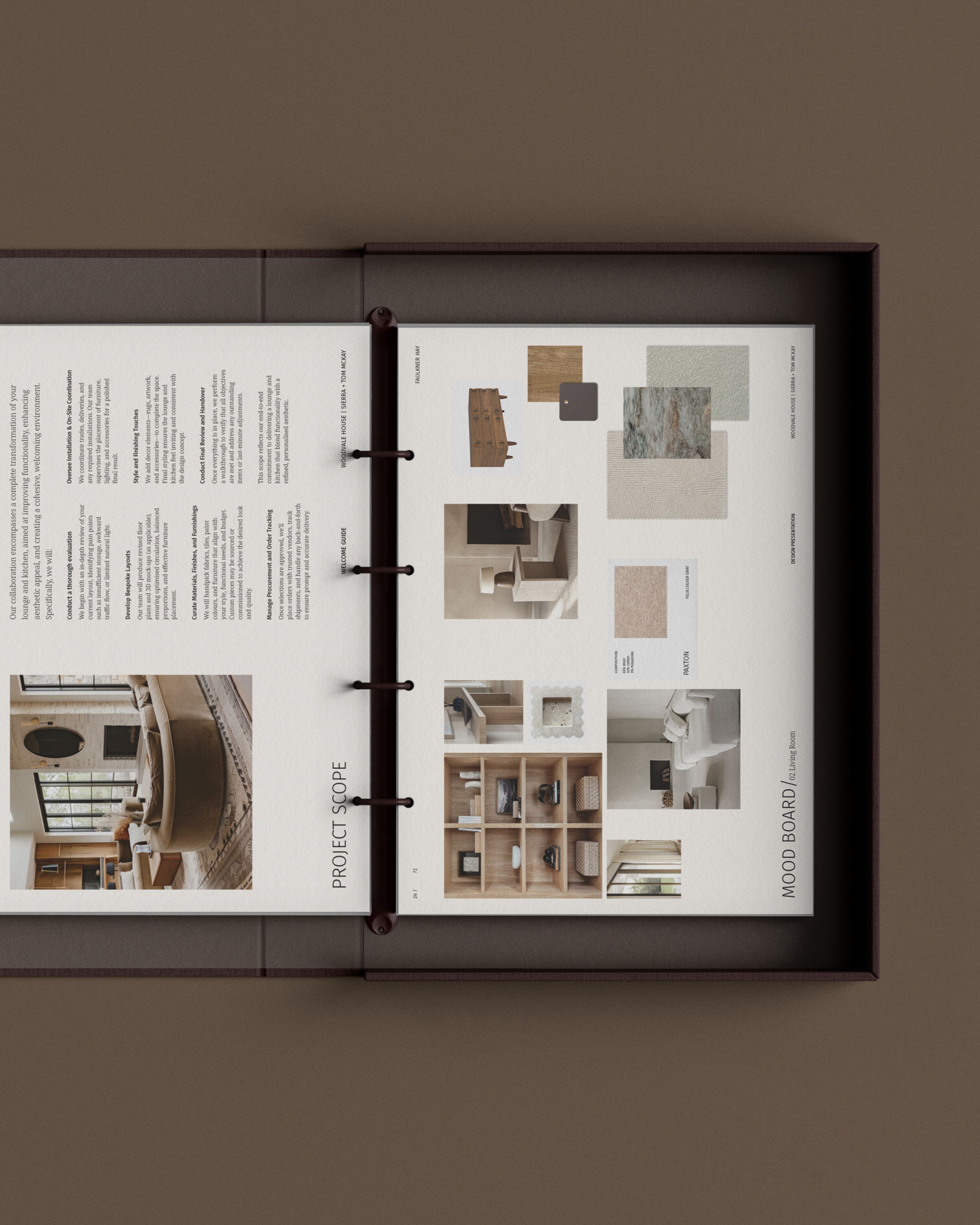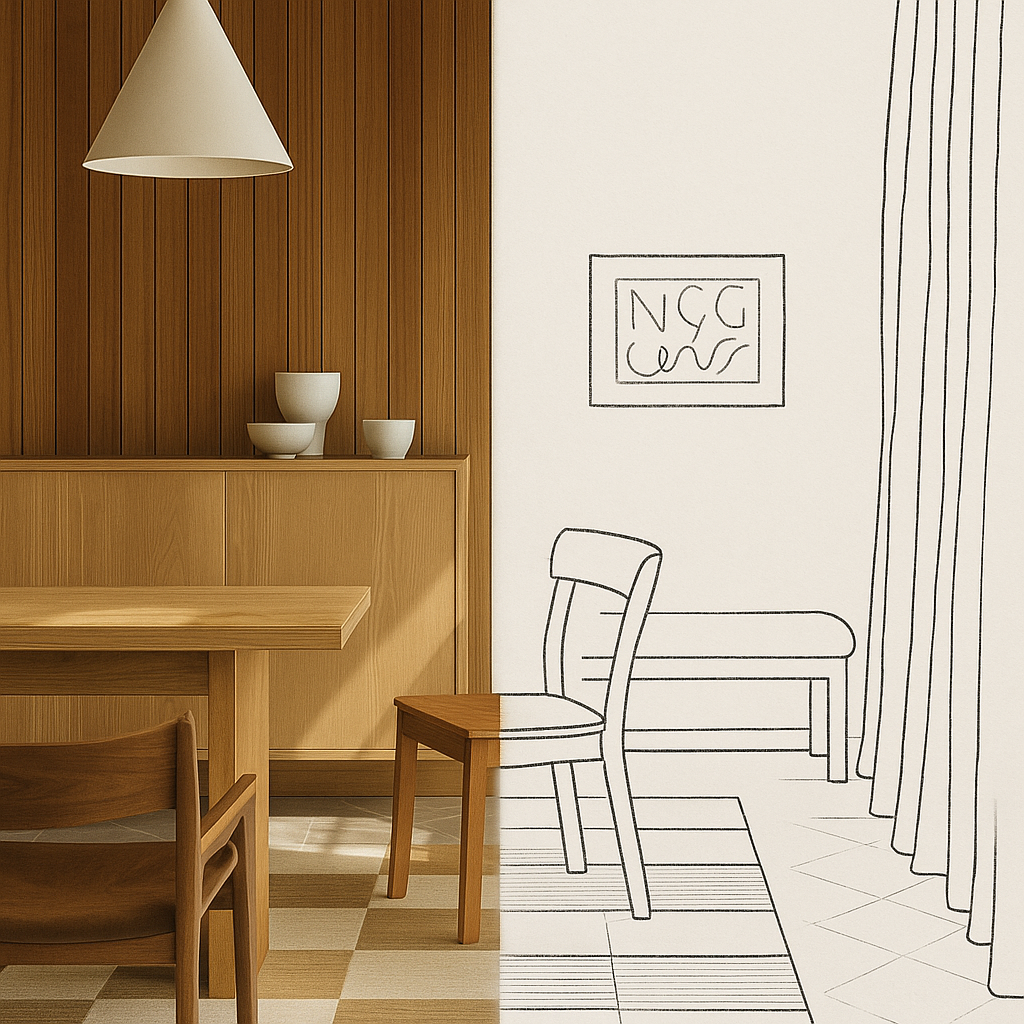The "Three Options" Rule: When It Works & When It's Complete Nonsense

"Always Present Three Options"
Last week we tackled what "storytelling" actually means in design presentations. This week, I want to talk about another piece of presentation advice we've all heard: "Always give your clients three options."
We've all been there. It's 11 p.m. the night before a client presentation. Options A and B are beautiful, thoughtfully developed concepts that you'd be genuinely proud to execute. And then there's Option C... the one you threw together because you needed a third option.
Let's be honest. You don't want them to pick Option C. You included it to make the other options look better by comparison. Or maybe you created it because some mentor or design school professor drilled into you that "clients always need three options."
But why? Who decided three was the magic number? And more importantly, is this approach actually serving you or your clients?
When Three Options Actually Make Sense
Before I get too far, let's acknowledge when presenting multiple options genuinely helps:
When you're in early concept phases and genuinely aren't sure which direction will resonate most with the client. Sometimes you need to put a few approaches on the table to gauge their reaction.
When your client is struggling to articulate what they want, and seeing distinct options helps them identify preferences they couldn't express on their own.
When there are legitimate budget considerations at play. The comprehensive dream version, the practical version, and the phased approach that gets them started now with room to grow later.
Here, multiple options aren't a presentation gimmick but a true exploration tool.
When Three Options Are Actively Harming Your Business
But let's talk about when this practice becomes harmful:
When you're creating options you don't believe in just to hit that magic number three. This wastes your time and dilutes your vision.
When clients start asking to "mix and match" elements from different options, creating a Frankenstein design that lacks coherence. ("I love the layout from Option 1, the colour scheme from Option 2, and the furniture from Option 3!")
When presenting multiple options without a clear recommendation positions you as a provider of choices rather than an advisor with solutions. Remember. They hired you for your judgment, not your ability to generate alternatives.
When creating extra options means you can't invest the time to fully develop your best concept. Would you rather present one stunning, fully realized concept or three half-baked ones?
A Better Approach
What if we ditched the arbitrary "rule of three" and instead tailored our presentations to match the specific situation?
Sometimes that means a single, confident recommendation. "After exploring numerous approaches, this solution best addresses your needs because..."
Sometimes it means good/better/best options based on budget or timeline, not arbitrary design differences.
Sometimes it means presenting your primary recommendation with targeted alternatives for specific elements. "Here's the layout I recommend, and here are two options for how we could approach the kitchen island."
The key is being strategic about choices rather than defaulting to habit.
The Confidence Factor
Here's something they don't teach in design school. Every additional option you present divides your client's confidence in your judgment.
Think about it. When you go to a doctor, do you want them to present three treatment options with no recommendation? Or do you want their best professional judgment about what will work, with alternatives only if necessary?
When you position yourself as the advisor who has arrived at THE solution (not A solution), you shift the entire client relationship. You're not asking for approval. You're sharing your professional opinion.
This doesn't mean being inflexible. It means doing the thinking work beforehand so your client doesn't have to.
Breaking the Three-Option Habit
Next time you're preparing a presentation, ask yourself:
- Do I genuinely believe in all the options I'm presenting?
- Am I creating choices because the situation demands them, or because of habit?
- Would my time be better spent developing one knockout concept rather than three adequate ones?
Your job isn't to be a design vending machine offering an array of choices. It's to be the advisor who solves problems with confidence and clarity.
Sometimes that means one option. Sometimes three. Sometimes something else entirely. But it should always be a deliberate choice, not a default setting.





